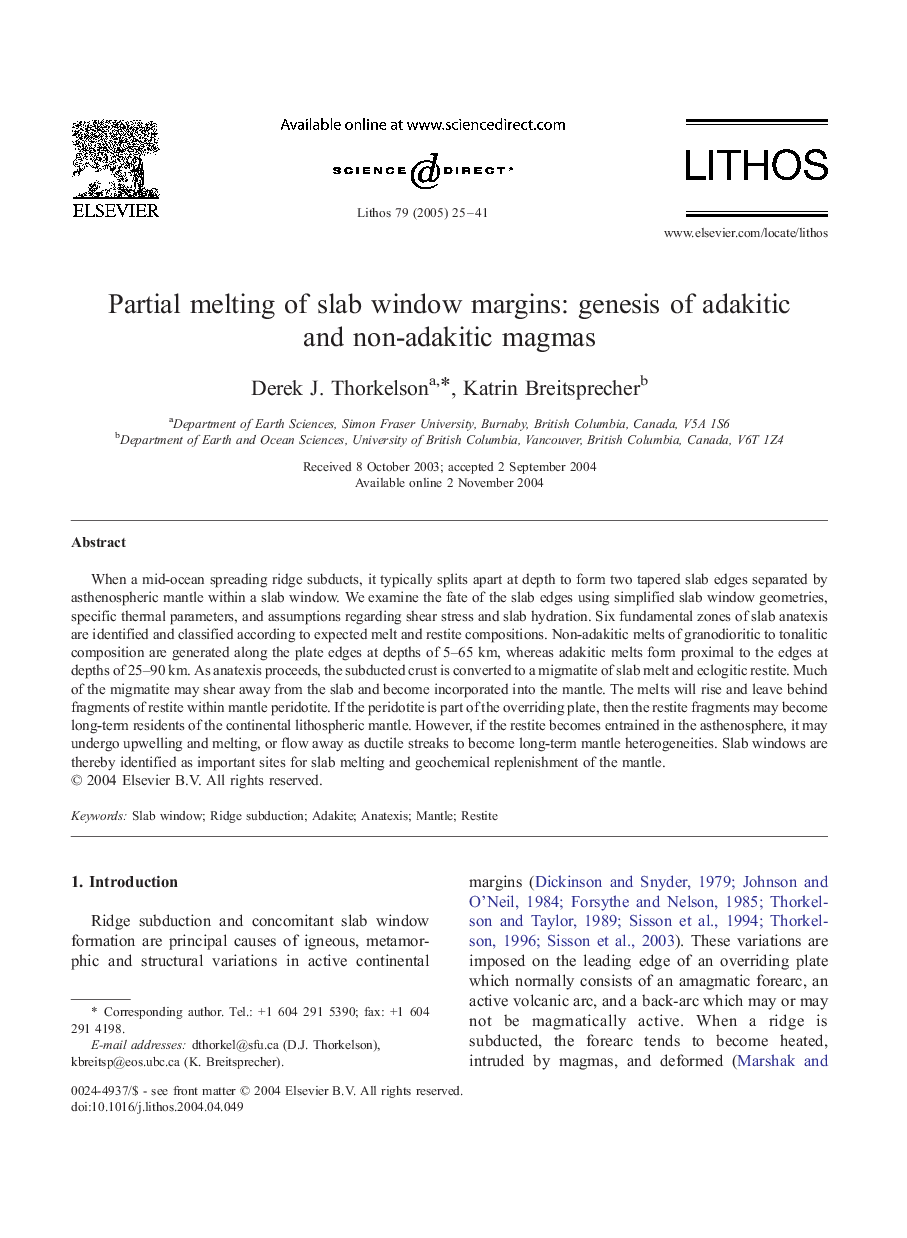| Article ID | Journal | Published Year | Pages | File Type |
|---|---|---|---|---|
| 9532011 | Lithos | 2005 | 17 Pages |
Abstract
When a mid-ocean spreading ridge subducts, it typically splits apart at depth to form two tapered slab edges separated by asthenospheric mantle within a slab window. We examine the fate of the slab edges using simplified slab window geometries, specific thermal parameters, and assumptions regarding shear stress and slab hydration. Six fundamental zones of slab anatexis are identified and classified according to expected melt and restite compositions. Non-adakitic melts of granodioritic to tonalitic composition are generated along the plate edges at depths of 5-65 km, whereas adakitic melts form proximal to the edges at depths of 25-90 km. As anatexis proceeds, the subducted crust is converted to a migmatite of slab melt and eclogitic restite. Much of the migmatite may shear away from the slab and become incorporated into the mantle. The melts will rise and leave behind fragments of restite within mantle peridotite. If the peridotite is part of the overriding plate, then the restite fragments may become long-term residents of the continental lithospheric mantle. However, if the restite becomes entrained in the asthenosphere, it may undergo upwelling and melting, or flow away as ductile streaks to become long-term mantle heterogeneities. Slab windows are thereby identified as important sites for slab melting and geochemical replenishment of the mantle.
Related Topics
Physical Sciences and Engineering
Earth and Planetary Sciences
Geochemistry and Petrology
Authors
Derek J. Thorkelson, Katrin Breitsprecher,
